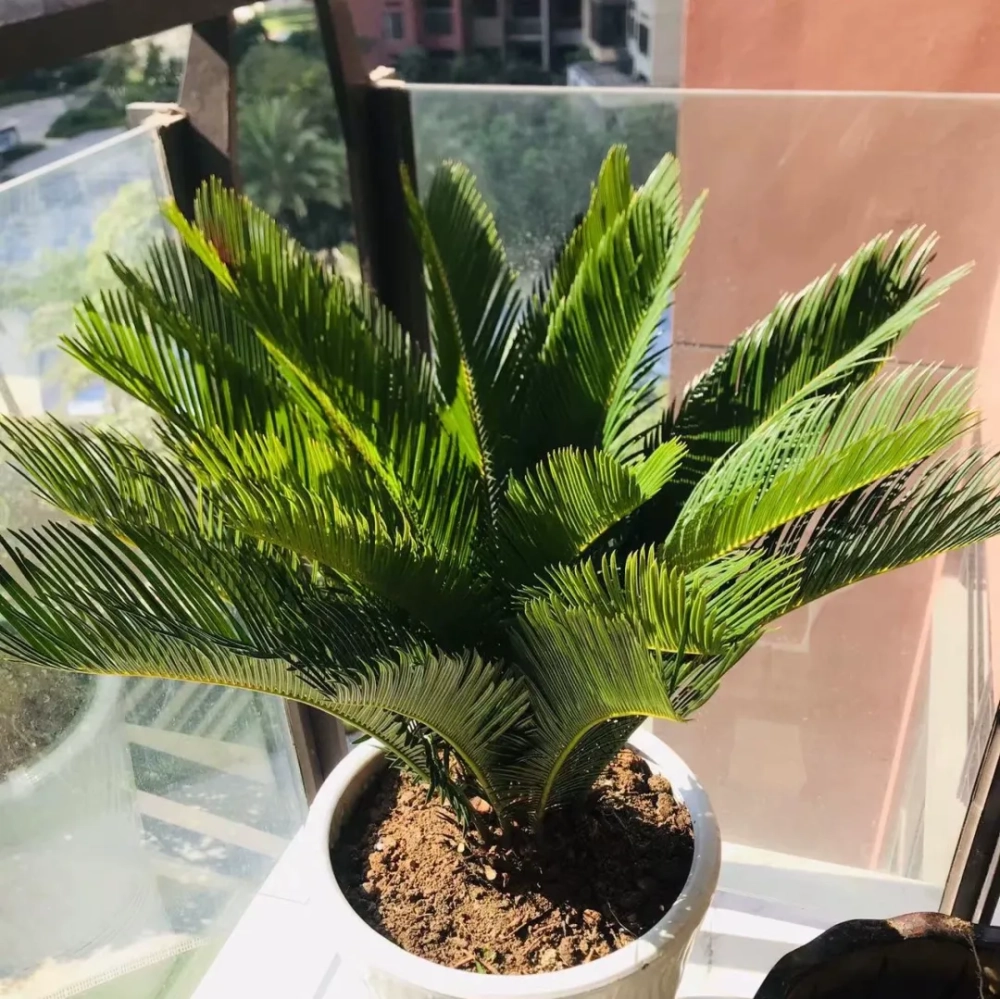Cycas revoluta, with its scientific name Cycas, is an ancient and unique potted plant. It is deeply favored by numerous plant enthusiasts due to its tenacious vitality and unique ornamental value, and occupies a certain position in home gardening.
The plant form of Cycas revoluta is highly recognizable. It has a thick trunk, and the bark presents a primitive and simple texture, as if telling the vicissitudes of time. Its leaves are as hard as iron, pinnately divided, dark green and shiny. Each leaf is like a carefully carved work of art, stretching out gracefully and giving people a solemn and majestic feeling.
In terms of symbolism, Cycas revoluta symbolizes steadfastness, longevity, wealth, and good fortune. Its tough characteristics make it a symbol of a resolute character, and it is often used by people to express praise for firm beliefs and an indomitable spirit. Meanwhile, Cycas revoluta has an extremely long lifespan, so it also carries the beautiful expectation of longevity. Placed at home, it implies that the family will be happy, healthy, and live a long life. And the auspicious meaning it contains adds a touch of auspicious atmosphere to the family, and it is regarded as a plant that can bring good luck and blessings.
The following key points need to be noted for the cultivation of Cycas revoluta:
In terms of light, Cycas revoluta loves sunlight but needs to avoid being exposed to the scorching sun in summer. It can be placed on a sunny windowsill or balcony to ensure an appropriate amount of light exposure every day, which promotes photosynthesis and keeps the leaves green and vibrant. In hot summer, proper shading should be provided to prevent the leaves from being burned.
Regarding temperature, Cycas revoluta is suitable for growing in a warm environment and has weak cold tolerance. In winter, attention should be paid to keeping it warm. When the temperature is below 0 °C, it needs to be moved to a warm indoor place to avoid the plant from being damaged by frost. Generally speaking, it is more appropriate to keep the indoor temperature above 5 °C.
Watering should follow the principle of "watering only when the soil is dry, and watering thoroughly when watering". The root system of Cycas revoluta is fleshy, relatively drought-tolerant, and afraid of waterlogging. During the growing season, the soil can be kept moderately moist, but excessive watering should be avoided to prevent root rot. In winter, the frequency of watering should be reduced, and the soil should be kept on the dry side.
Fertilization should be done with thin fertilizers applied frequently. During the vigorous growth period, a thin liquid fertilizer can be applied every 2 - 3 weeks, mainly nitrogen fertilizer, which can promote the growth of branches and leaves. After autumn, stop applying nitrogen fertilizer and increase the application of phosphorus and potassium fertilizers, which helps to enhance the plant's cold resistance and prepare for the winter.
In addition, Cycas revoluta can be repotted once every 2 - 3 years. When repotting, pay attention to pruning old and diseased roots and replacing the old culture soil with new one to ensure that the plant has sufficient nutrient supply and a good growing environment.
How to Cultivate Potted Cycas revoluta?

Share with
Tagged in :




Leave a Reply